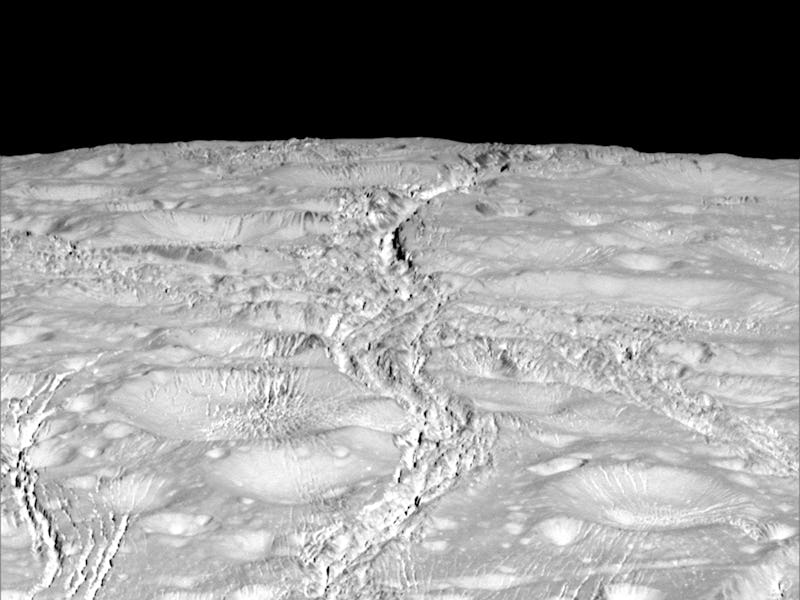Saturn's Ice-Spitting Moon Enceladus Photographed by NASA
Craft snaps potentially habitable world.

NASA’s Cassini spacecraft has beamed back yet another stunning set of images of one of the Saturn’s fascinating moons more than a decade after it first reached the gas giant, the space agency announced tonight.
The stunning high-resolution pictures of Enceladus, which spits out plumes of vapor from close to its south pole and was last month found to bear a global ocean under its icy crust, reveal more peculiar topographical features of the highly geologically active moon.
This view from NASA's Cassini spacecraft shows battered terrain around the north pole of Saturn's icy moon Enceladus.
“The northern regions are crisscrossed by a spidery network of gossamer-thin cracks that slice through the craters,” Paul Helfenstein, a member of the Cassini imaging team at Cornell University, told nasa.gov.
“These thin cracks are ubiquitous on Enceladus, and now we see that they extend across the northern terrains as well.”
Cassini snapped the photos from 1,142 miles (1,839 kilometers) away, according to NASA, which in space terms actually means extremely close.
NASA's Cassini spacecraft spied this tight trio of craters as it approached Saturn's icy moon Enceladus for a close flyby on October 14, 2015.
But the craft isn’t satisfied yet and will dive back down straight into the moon’s icy plume on October 28, coming within 30 miles of the moon’s south pole.
Bit-by-bit these fly-bys should help NASA paint a picture of the relationship between the new-found ocean and the plumes one of the solar system’s most potentially habitable outer worlds furiously spits out.